Human Factors Engineering
What Is It?
Using everything we know about how people gather information, think, understand, remember, and act to design effective technology.
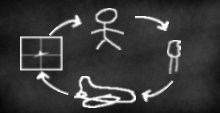
Human
Our approach recognizes that the human is an integral part of the system. If the pilot can't use the control stick effectively or gather information from the flight displays efficiently, the flight won't be a good one.
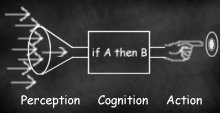
Factors
Characteristics of human perception, cognition, and motor response determine your success with any piece of technology.

Engineering
Applying scientific knowledge to the design of technology. Dropping a log across a creek isn't the same as building a bridge. Effective technology optimizes user performance, appeals visually, and minimizes costs.
Measure It?
Yes we can. Both in terms of quality of the user experience and the cost of a bad experience.
-
The Quality of the User Experience
In 2006, the International Organization for Standardization (ISO) published its standard for usability test reports (ISO/IEC 25062). Three measures of usability are required: Efficiency, Effectiveness, and Satisfaction. These measures can be made on any technology that a human uses. We have been using the standard since it was released in draft form (1998) as part of the Industry USability Report (IUSR) Project.
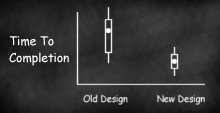
Efficiency
How productive is the user in accomplishing a goal? Measuring time, physical effort, trips to help resources. Design for less time, less effort, and less variability from one user to the next.
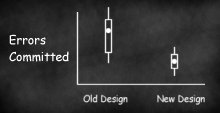
Effectiveness
How good is the outcome? Measuring accuracy and completeness with which users achieve specified goals. Design for fewer errors and a better result.
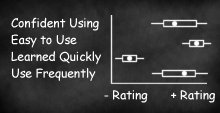
Satisfaction
How satisfied are the users? Measuring ratings to standardized surveys that go beyond "did you like it". Design for user confidence, understanding, interest, and independent action.
-
The Cost of a Bad User Experience
A bad user experience is a cost. Here are three perspectives on the cost of poor usability

Investors
Bad review by Walt Mossberg in the WSJ? Analysts at USC and University of Miami put big $ values on poor quality (The Value of Quality). The difference between a bad review and a good review can swing investors toward or away from the producing company.
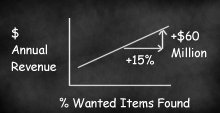
Return on Investment (ROI)
Compare the cost of Human Factors Engineering to the revenue to be gained. Discover and eliminate roadblocks to successful use. A back-of-the-envelope formula can scope the ROI.
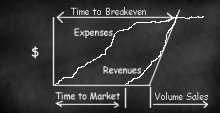
Profit
When chasing time-to-market, don't forget that immature (unusable) products are slow to gain market acceptance. The cost of correcting usability issues and providing customer support push the breakeven point out even further.
When to Do It?

Usability follows from knowing what "work" the user will do to achieve what "goal". Design to aid the user, not to force the user to expend superhuman effort. Human Factors involvement at product definition is the most efficient use of everybody's time.
Where It Counts?
Do you need a Human Factors Engineer (HFE) for every technology project? Probably not - but the smarter you are about usability, the better you'll do at picking a log to drop across the creek. The following are two good rules of thumb for where an HFE really makes a difference.
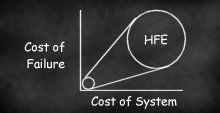
Risk
The value of user performance increases with the cost of the technology and the cost of a failure resulting from using the technology. That's why there are lots of HFSs in aerospace and power systems design. What will your technology cost you or your customer? What will it cost you or your customer if the technology fails to execute its mission?
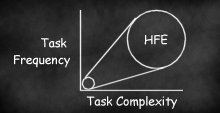
Complexity & Frequency
The value of user performance increases with the difficulty of the task and frequency of execution. That's why there are lots of HFEs around phone companies. Managing complexity (and the errors that go with complex tasks) reduces the cost per task and the costs of cleaning up errors. How complicated will the user find your task? How many times a week/day/hour will the user have to deal with that complexity?
How It Happens?
Human Factors Engineering happens right along with the rest of the product development cycle.
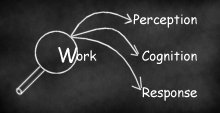
Analysis
Gathering information about the end goal and the work required. Documenting the perceptual, cognitive, and motor response requirements. Then rebuilding the task with technology that transforms the user's ability to reach or go beyond the goal.

Design
Putting the user in direct contact with the transformed task. Optimize rate of learning, ease of performing, and accuracy of execution. Design of methods, displays, and controls for use across the system. Mapping tasks to methods, displays, and controls.
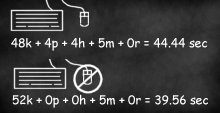
Testing
Measurements with or without a working system. Formal usability testing puts potential users in the task using the design. Analytical models such as keystroke-level models (KLM) and GOMS models predict user performance based on known performance characteristics and mathematical equations. What's the benefit of adding tab-between-fields in a standard address entry block? A 10% improvement in completion time.
Connect With Us
O’Brien Consulting is a human factors engineering firm. The business was incorporated in 1998 in Cupertino, California - the heart of Silicon Valley. We moved to Leawood, Kansas, a suburb of Kansas City, in 2002.
Our business is human factors engineering - applying the science of human performance to the design of technology. The founders, Kevin and Kim O’Brien, have a combined 40 years helping teams build the processes, information displays, and input methods that make up a product's user interface.
-
Projects include:
- Human Factors support for Hewlett Packard's TouchSmart PC
- PC Mag's Editors' Choice award
- PC World's Most Innovative Products award
- CES Best of Innovations Design and Engineering Award
- Usability testing of Sun Microsystem's Linux desktop
- Engineering models for Palm OS 3 graphical user interface tools
- Usability testing of H&R Block's Web-based tax products
- Interaction design for HP's Media Center photo & music tools
Clients include:
- Computer Hardware & Software:
- Hewlett Packard (HP)
- Sun Microsystems
- Connex SANavigator (Brocade, Inc.)
- Telecommunications:
- SBC (now AT&T)
- Openwave
- Genesys Labs
- Mobile Devices:
- Palm
- Hewlett Packard
- Openwave
- Sprint
- Advertising:
- Callahan Creek
- Nicholson Kovac
- MARC USA
- Internet, Intranet, & e-Commerce:
- H&R Block
- iPlanet / Netscape
- GO.com / Infoseek
- SBC (now AT&T)
- MedicaLogic (now GE Health)
- RelateTheNews
- System Controls:
- Emerson Process Management
- MicroMotion
-

Ph.D., Applied Experimental Psychology, Rice University
Co-founder of O’Brien Consulting, Kim was a staff engineer at Sun Microsystems for eight years. While with Sun, Kim evaluated and designed software and documentation across Sun’s product line. Projects included UNIX desktop applications, system administration tools, and web-based e-commerce applications.
Prior to Sun Microsystems, Kim did human factors work for Lockheed Engineering & Sciences at Johnson Space Center and Canon Information Systems.
- Member:
- Human Factors and Ergonomics Society (HFES)
- BayCHI - San Francisco Bay Area chapter of CHI
-

Ph.D., Experimental Psychology, University of Kansas
Kevin has over 25 years experience providing human factors expertise in consumer computing, network administration, customer care systems , human resource and medical records systems, and on-line help.
Prior to forming O’Brien Consulting, Kevin was a senior human factors engineer in the telecommunications industry (Pacific Bell) and aerospace industry (Lockheed Engineering & Sciences at Johnson Space Center).
- Member:
- Association for Computing Machinery (ACM)
- ACM's Computer Human Interaction (CHI) Special Interest Group
- Human Factors and Ergonomics Society (HFES)
© Copyright 2016 O’Brien Consulting, Inc. All rights reserved
This site uses Skeleton by Dave Gamache. Great Stuff!